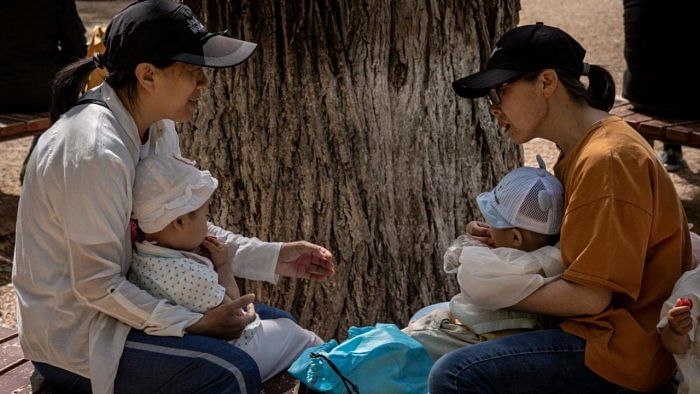
The most populated country in the world, China, after experiencing a dramatic decline in the number of births scraped its two-child limit and announced on Monday that couples can have up to three children.
China, known for its strict birth control policies, had a one-child limit until 2016.
Like China, there are more countries that have either used birth control policies in the past or continue to use one to control overpopulation. At the same time, there are countries that are providing incentives to the citizens upon childbirth.
Here’s a list of a few countries that have restrictive or incentive-driven child policies:
Japan
Japan has a well-rounded welfare system in place to encourage child birth. The government supports couples who wish to start their families by providing them with paid maternity leave, a monthly childcare allowance of up to 12 years, a childbirth grant, and other grants. It provides a monthly grant of 40,000 to 60,000 yen to single parents too.
The fertility rate of a country should be 2.1 for its population to remain stable. In 2020, it was 1.369 births per woman for Japan, which is the same as it was in 2019.
South Korea
The country offers childcare facilities and other incentives including sending parents home from offices early on the third Wednesday of every month so that they can spend more time with their children.
Turkey
In 2015, President Recep Tayyip Erdogan announced a slew of incentives for couples, including gold coins for first-time mothers and the exibility for mothers to work part-time which the government paid for.
Vietnam
Since the 1980s, Vietnam’s population policy has put a two-child limit within a gap period of three to five years. However, ethnic families are allowed to have a third child if they desire.
The Southeast Asian country’s fertility rate in 2021 stood at 2.034 births per woman, which is a 0.34 per cent decline from 2.041 births per woman in 2020.
India
Though India doesn’t have a strict family planning policy, the Ministry of Health and Family Welfare (MoHFW) advocates couples to have two children with an interval of at least three years between the two.
In 2021, India’s fertility rate is 2.179 births per woman, which is a 0.95 per cent decline from 2020.
Nigeria
Nigeria’s child policy seeks to reduce fertility from the current six children per family to four children per family. The government suggests the ideal marriage age of 18 years for women and 24 years for men. It also advocates pregnancies in the age group of 18-35 years with at least two years interval between each child.
The fertility rate of Nigeria in 2021 is 5.212 births per woman, and in 2020 it was 5.281.
New Zealand
The New Zealand government offers a lot of benefits to the parents to raise their child. Every family gets a weekly child care allowance for the first year, however, depending on the family’s financial situation, the time period can be increased up to three years.
New Zealand’s fertility rate is 1.868 births per woman in 2021, it’s a 0.59 per cent decline from 2020.
Sweden
Sweden is known for its generous child care benefits and sexual and reproductive health rights. It spends at least three per cent of its GDP on the allowance and benefits related to the children and families.
In 2012, Sweden pledged to make an annual contribution of $ 40 million on contraception. Later in 2017, the government revitalized its family planning commitment by adding an additional $24 million to its Global Sexual and Reproductive Health Rights (SRHR).
Sweden’s fertility rate is 1.846 births per woman in 2021. In 2020, it was 1.847 births per woman.
Canada
The government of Canada provides a lot of benefits to its citizens for childcare, especially for children with disabilities.
Canada’s current fertility rate in 2021 is 1.500 births per woman, which is a 0.6 per cent decline from 1.509 births per woman in 2020.